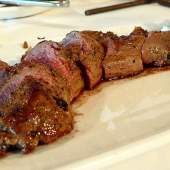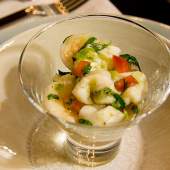Belgium

"What you say when you're drunk should have been thought about beforehand.”
— Belgian proverb
The Kingdom of Belgium, a small country approximately the size of Maryland, is located in western Europe, squeezed in between France and Luxembourg to the south, Germany to the east, and the Netherlands (of which Belgium was once a part before declaring its independence in 1830) to the north. Its northwest corner, for about 41 miles, borders the North Sea. Undeservedly, Belgium tends to be overshadowed by its much flashier neighbors, which is too bad because the country has a lot to recommend it, especially from a culinary standpoint. Just consider: Belgium is known internationally for four things that most people absolutely love: chocolate, waffles, beer, and fries.
Like so many other regions, Belgium’s cuisine is heavily influenced by the countries it borders, and it is sometimes said that its culinary tradition combines the quantity of German food with the quality of the French. A win-win, right? Let’s look at the country’s most popular exports, and some other quintessentially Belgian specialities. Starting with…
-
Chocolate. Belgium’s chocolate industry can only be described as massive. There are more than 2,000 chocolatiers plying their wares here, and the composition of its chocolate has been regulated by law since 1884. So it’s uniformly excellent (or else!). Interestingly, Brussels International Airport sells more chocolate than anywhere in the world, and globetrotting tourists have been known to choose flight layovers there just to get some. Wouldn’t you?
-
Waffles. You know the big, fluffy, deep, wide-pocketed variety you can make yourself at many hotel breakfast buffets? You can thank Belgium for those. Or more specifically, a Brussels native named Maurice Vermersch, who originally named his creation the “Bel-Gem Waffle.” (Get it?) They were first introduced in America by another Belgian, Walter Cleyman, who in 1962 brought them to the Century 21 Exposition in Seattle (where they were topped with strawberries and whipped cream and sold for a dollar), but they really caught on at the 1964 New York World’s Fair. Top them with a sprinkle of powdered sugar, or fresh fruit, or cinnamon and chopped nuts, or just a big dollop of butter. By the way, neighboring Holland contributed the Stroopwafel — a crisp, round cookie made from two very thin “waffles” glued together with a caramel-flavored syrup (stroop). Not surprisingly, these are big in Belgium as well.
-
Beer. How pervasive is beer culture in Belgium? Very — so much so that in 2016, UNESCO included it on their Representative List of the Intangible Cultural Heritage of Humanity. This not-very-large country boasts more than 180 unique breweries churning out 1,600 different varieties of beer that run the gamut from pale lagers to black stouts and everything in between, each with its own distinctive stein or glass (but drinking out of the bottle is marginally acceptable). The average Belgian citizen — presumably, we hope, excluding children — consumes a little more than 22 gallons of beer annually. That, you will likely agree, is a lot of beer, although not as much as the 53 gallons consumed per capita around the turn of the 20th century.
-
Fries. You will notice that we did not refer to these as “French fries,” because — surprise! — they originated in Belgium. Yes, these crispy and sometimes greasy fried potato sticks, companion to hamburgers and hot dogs everywhere, are Belgium’s claim to fame. One story is that the French fry came about when Spanish explorers brought the potato from its original home of Peru to Belgium, where fishermen, their nets coming up empty in winter, hit on the idea of forming potatoes into fish shapes and frying them. Was anyone fooled? If they weren’t, they were not heard to complain too much. Fries are a very popular street food in Belgium, where they are served in paper cones with a variety of sauces, or on baguettes in sandwiches. And they are routinely made at home — you’ll know you’re in a Belgian kitchen when you see a deep fryer, which is standard operating equipment.
What other dishes are popular? Here are a few quick hits:
-
Carbonnades Flamandes. A meat dish very similar to Beef Bourguignon, but with beer substituted for the burgundy. Of course.
-
Filet Américain. This, essentially, is steak tartar, but mixed with a special sauce made from mayonnaise, ketchup, onions, celery, capers, and chervil. Tastes better than it looks.
-
Waterzooi. This is a savory fish stew, often made with chicken instead.
-
Boudin blanc. This is a white sausage with lots of milk added, which gives it a silky texture and mild flavor. It’s usually served with a fruit compote or mashed potatoes (you can pretty much expect these with almost everything).
Boudin blanc
If you don’t like the cuisine here, Paris is only about an hour away by train. But everyone will surely find something to love in friendly and easygoing Belgium — the country’s sense of humor is embodied in its most beloved tourist attraction, a Brussels landmark called Manneken Pis that is often garbed in seasonal costumes. See what we mean?





